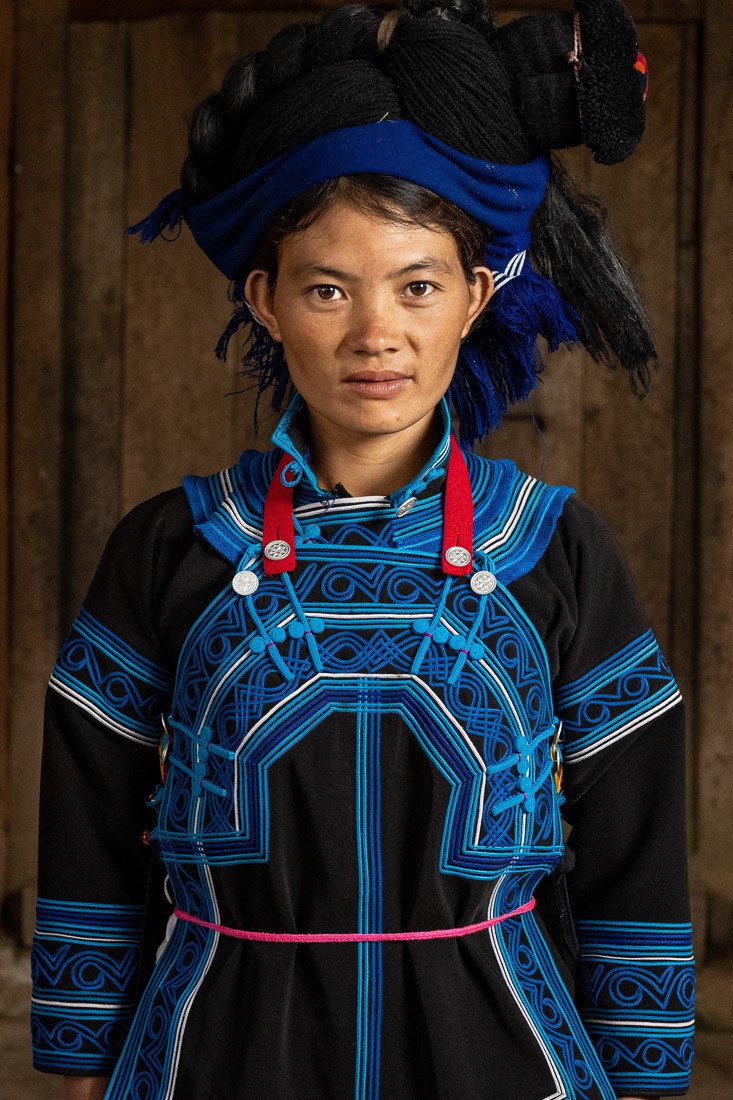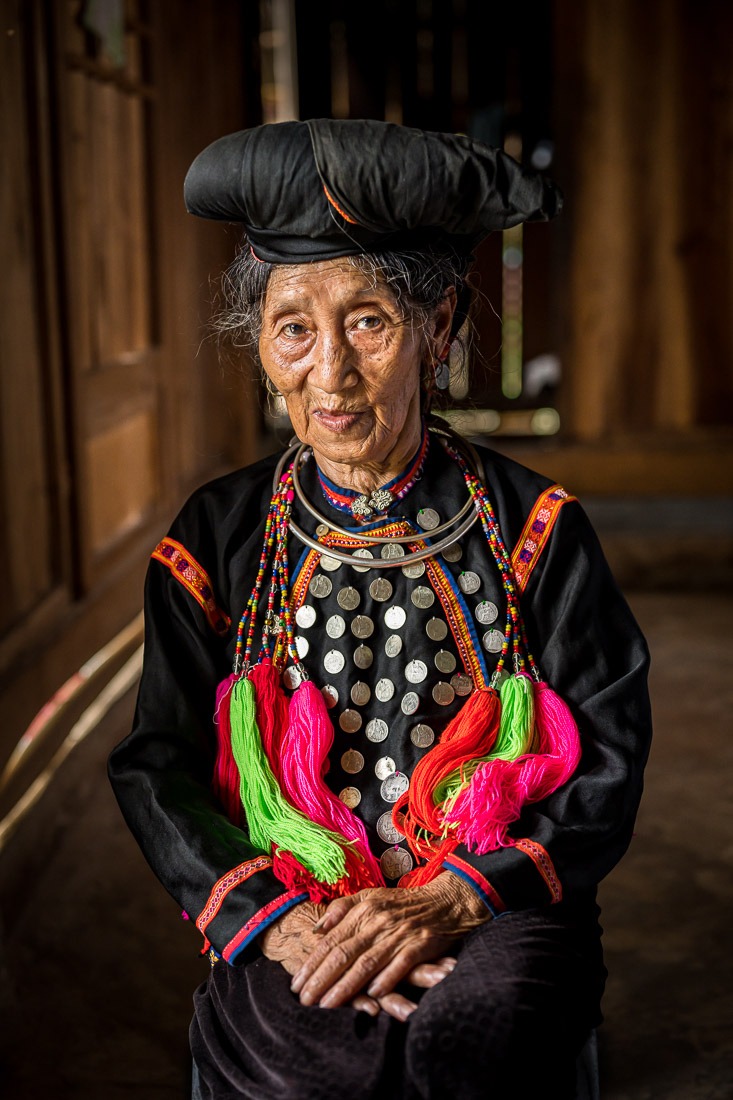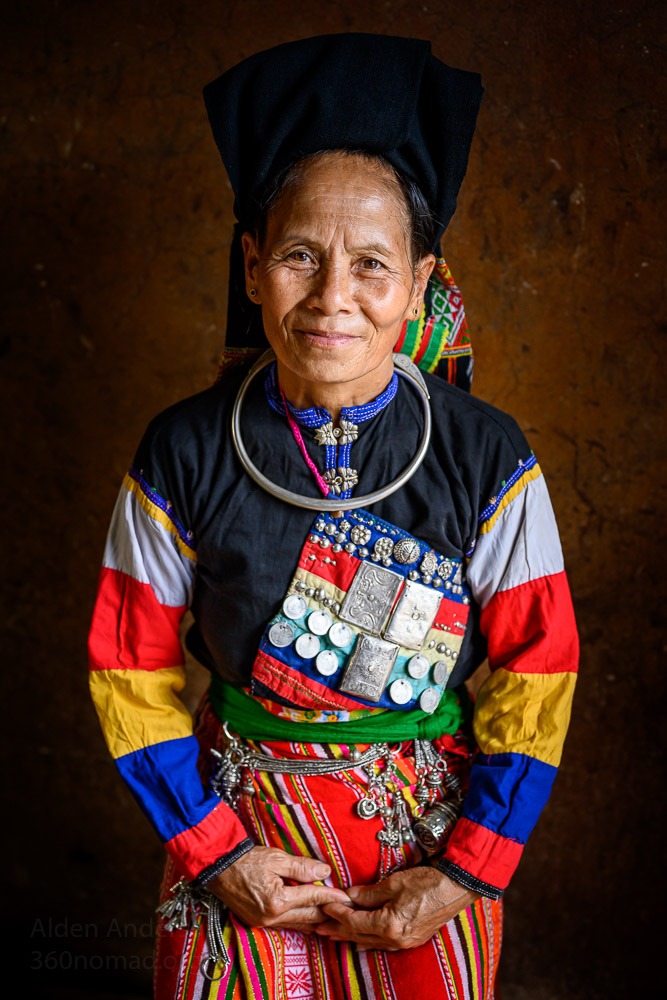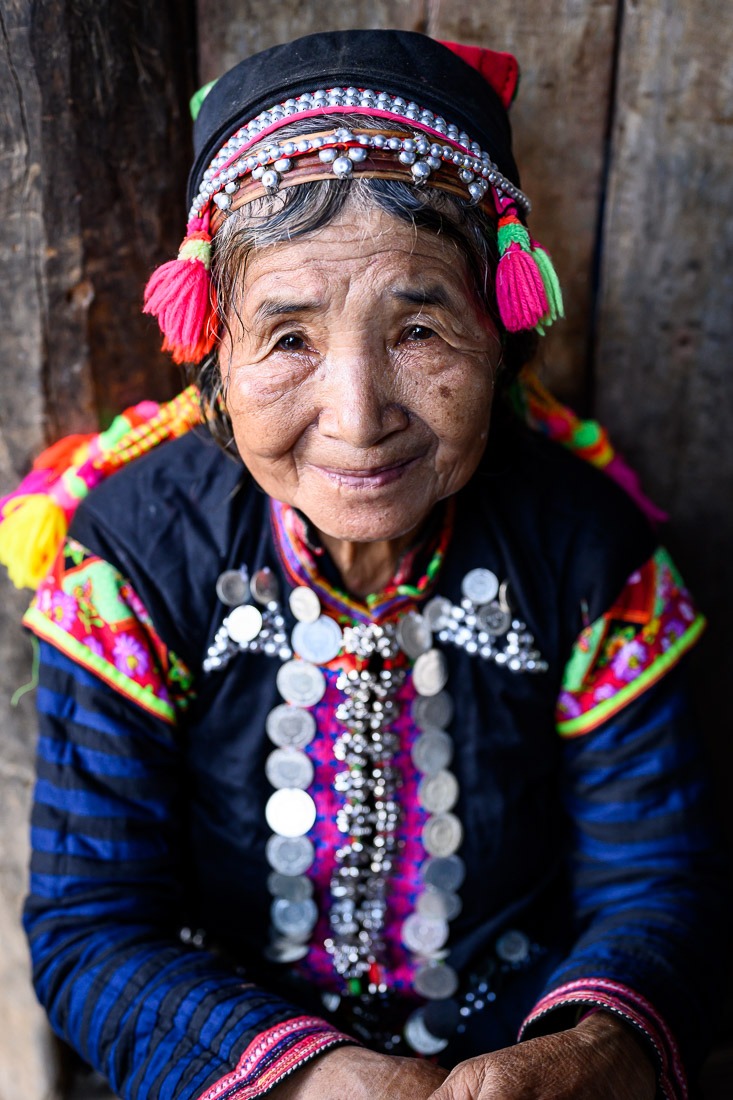B’lôn, 90, Stieng Ethnic Group Vietnam
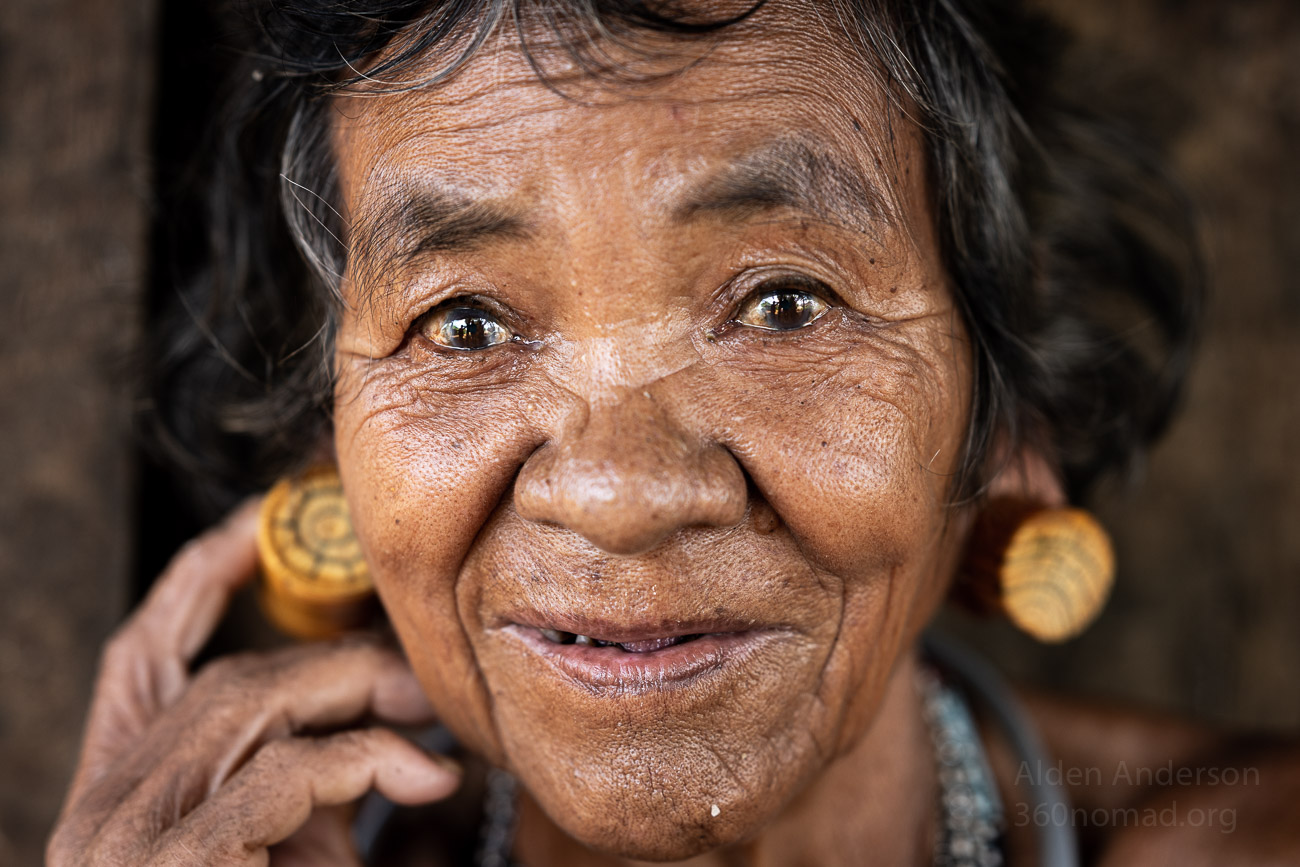
B’lôn, 90, from the Stieng (Xtiêng) ethnic group, sits in front of her small wooden house, surrounded by her family and community. Her house is old and the whole thing is leaning at an angle. She smiles warmly when we approach her village.
B’lôn is from the Stieng (Xtiêng) ethnic group and doesn’t speak Vietnamese. Her granddaughter tells us about her life.
“Her husband (my grandfather) passed away a long time ago. She used to help soldiers to carry rice during the (Vietnam-American) war.”
“She lives alone in this house. However, her children and grandkids take care of her and live close to her.”
“She has been wearing this silver necklace since she was a kid. She has had these ivory earrings for a long time. Many people try to buy them from her, but she doesn’t want to sell them. She wants to keep them until she dies.”
B’lôn, 90 years old
Stieng (Xtiêng) Ethnic Group
Bình Phước, Vietnam
(Southern Vietnam)
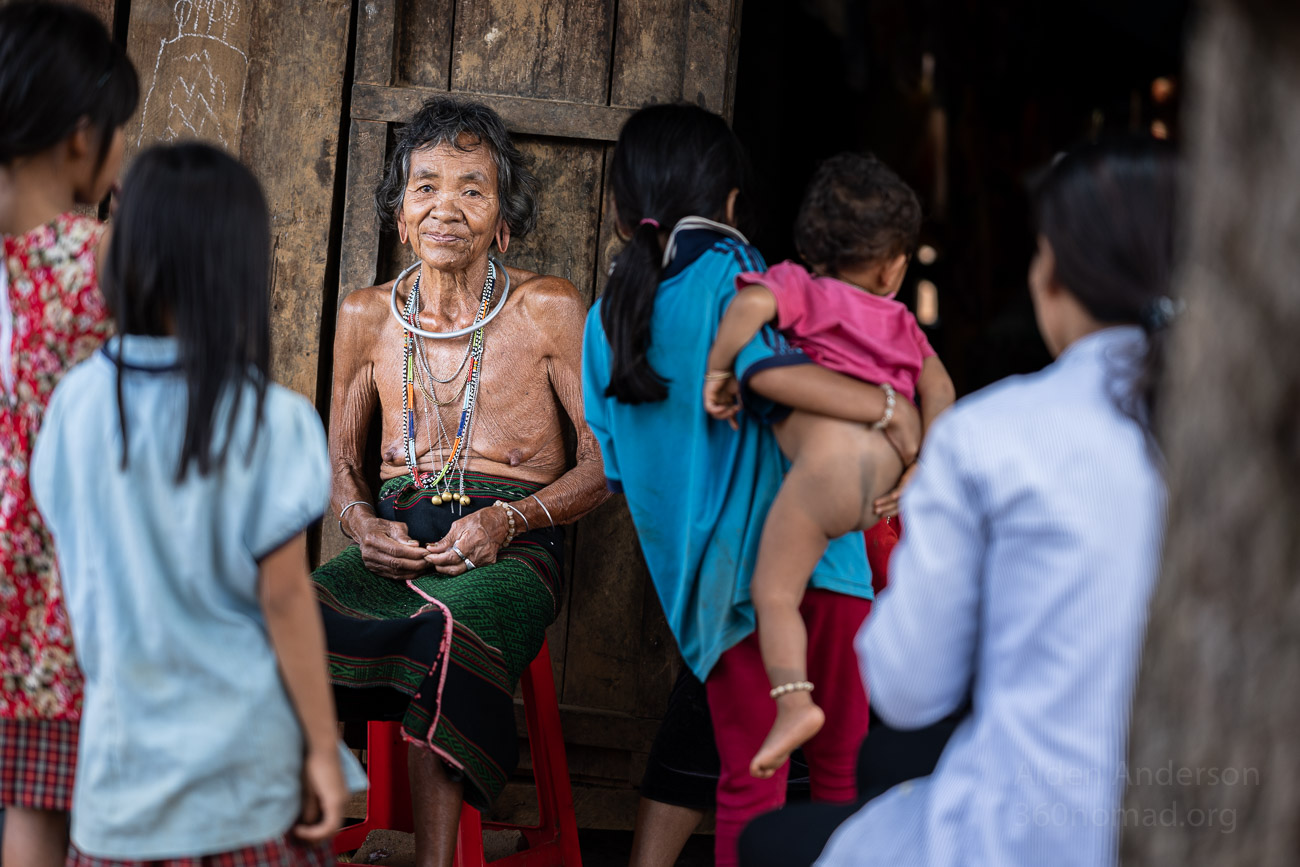
B’lôn, 90, sits in front of her small wooden house, surrounded by her family and community. Her house is old and the whole thing is leaning at an angle. She smiles warmly when we approach her village.
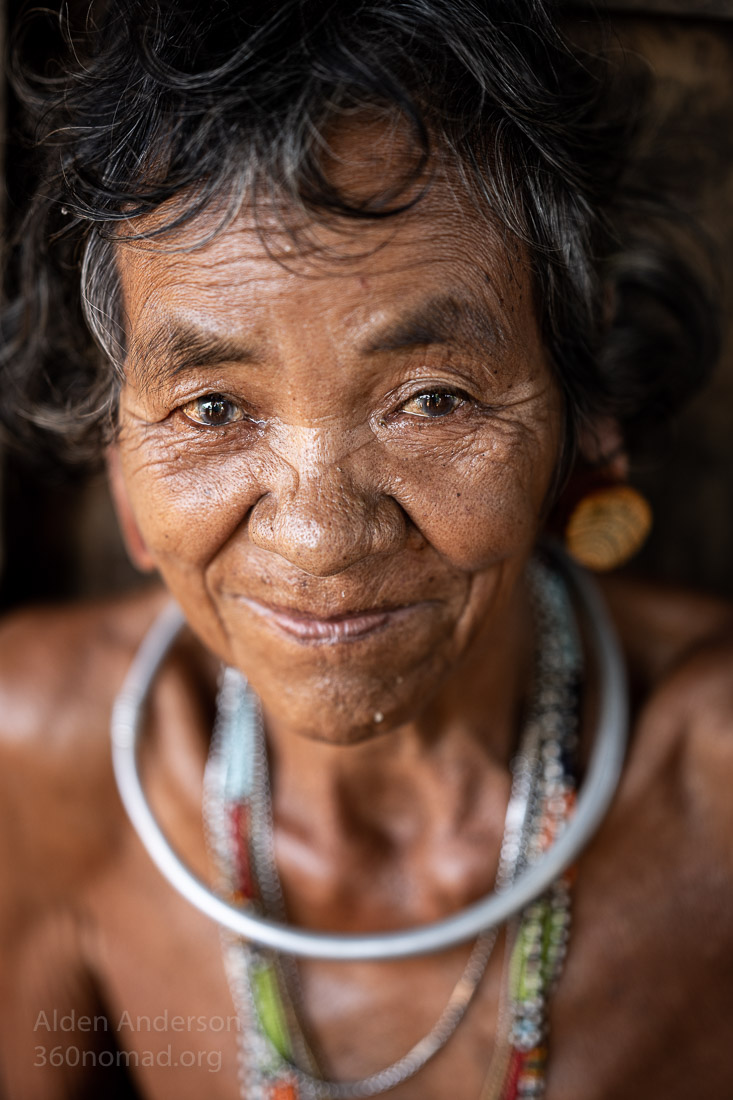
“She has been wearing this silver necklace since she was a kid. She has had these ivory earrings for a long time. Many people try to buy them from her, but she doesn’t want to sell them. She wants to keep them until she dies.”
Ivory and Stretching Earlobes in Vietnam
Of all of the ethnic groups we’ve visited across Vietnam the Xtieng have the most, and youngest people with stretched earlobes and ivory earrings (the youngest we saw were women in their late 40s and 50s). Stretching the earlobes and filing the teeth are traditions that have been “forced into oblivion” (as documented by Vietnamese ethnologists) .
“Cultural exchange between different ethnic groups, particularly with the ethnic majority Kinh, along with the growth of mass media (in the form of newspapers, books, radio and TV stations) has exerted pressure on the ancient customs, gradually forcing some into oblivion. These include:”
“The custom of filing teeth and stretching the earlobes practiced by many ethnic groups along the Trường Sơn mountain range, in the Central Highlands, and in the southeastern region of the country.”
In the past, people used ivory, (or sometimes bamboo as a cheaper alternative) in their stretched earlobes. Now, the ivory earrings are getting rarer and rarer as collectors in many cases have bought them from the people wearing them. In every case, where we have visited an ethnic village and older people have stretched earlobes but no ivory, it is because collectors have purchased them. We’ve witnessed the same thing with other ethnic jewelry as well as with their traditional clothes in a few cases. It is a sad situation and should definitely be discouraged. However, in this Stieng village were quite happy to find more than a few people that still had their traditional ivory earrings.
As it is no longer practiced, stretching the earlobes and using ivory earrings is a custom that will disappear once the small number of people that have it now pass on.
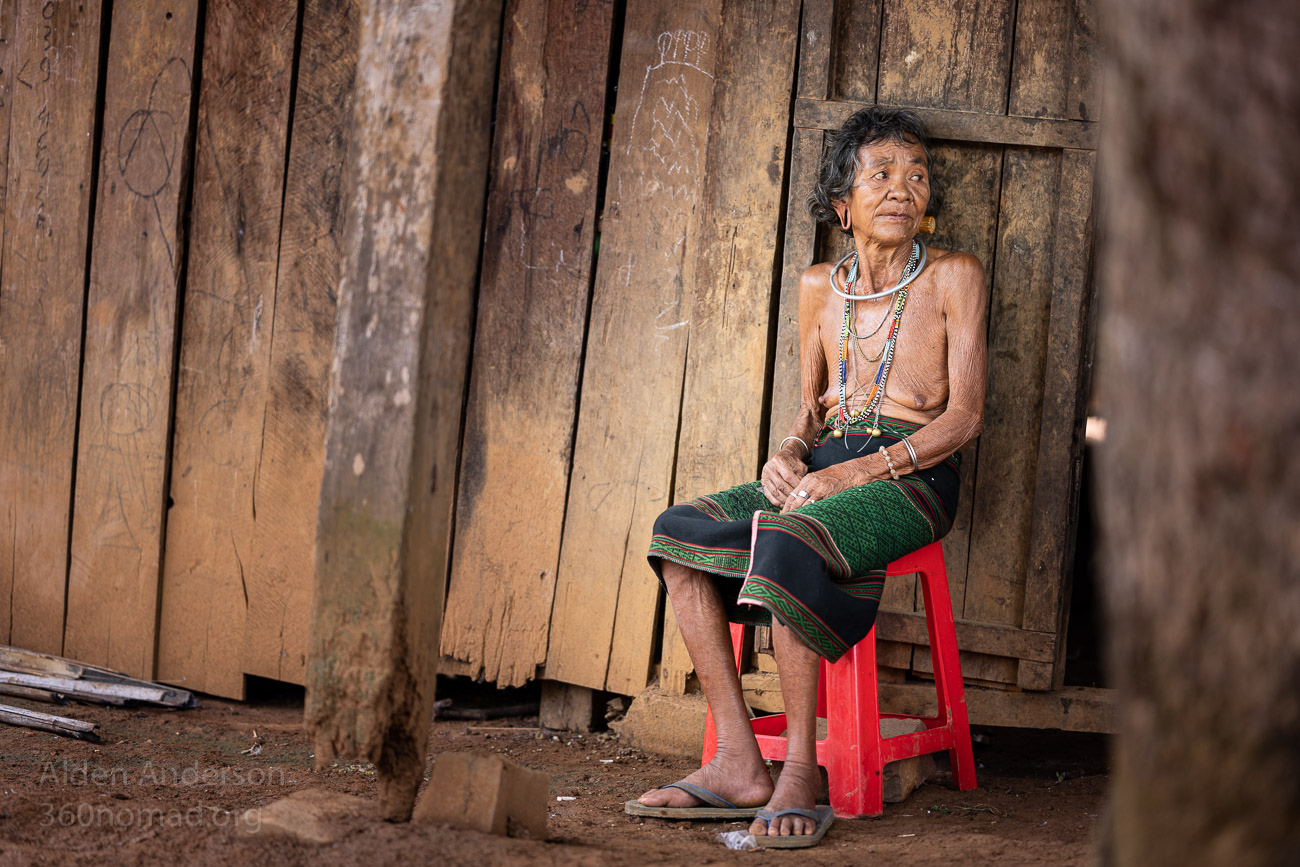
B’lôn doesn’t wear her ivory earrings every day. Her family stores them in a secure place as they are very valuable. She refuses to sell them and will wear them when she passes. Here, she sits in front of her house with only one earring. Since she hasn’t worn them in a while her ear lobes need to adjust again.
Stieng or Xtiêng?
As is the case in many of the ethnic groups in Vietnam, there are multiple names and spellings. Most of the ethnic groups in Vietnam also exist in other countries whose names and spellings vary. In writing, I have tried to use the most popular names and also the “proper” names listed in Vietnamese. For the Stieng ethnic group “Stieng” is the typical spelling in English. In Vietnamese it is written as Xtiêng or Xtieng.
Xtieng Ethnic Group — Summary
Official Name
Xtiêng
Population (Vietnam)
100,752
Location (Province)
Binh Phuoc
(Southern Vietnam)
Language Group
Austroasiatic:
Mon-Khmer
Discover more stories from ‘Vietnam The People’
